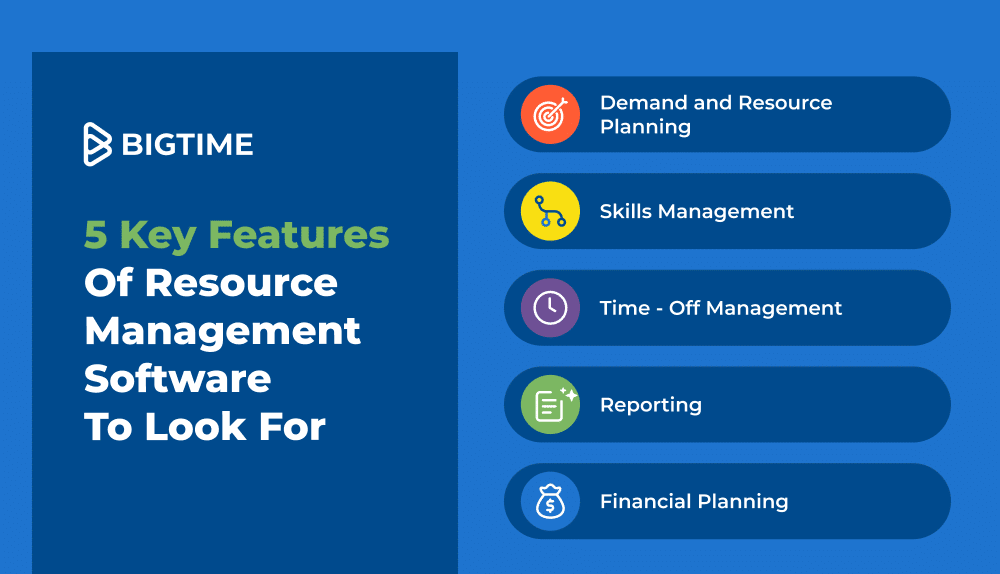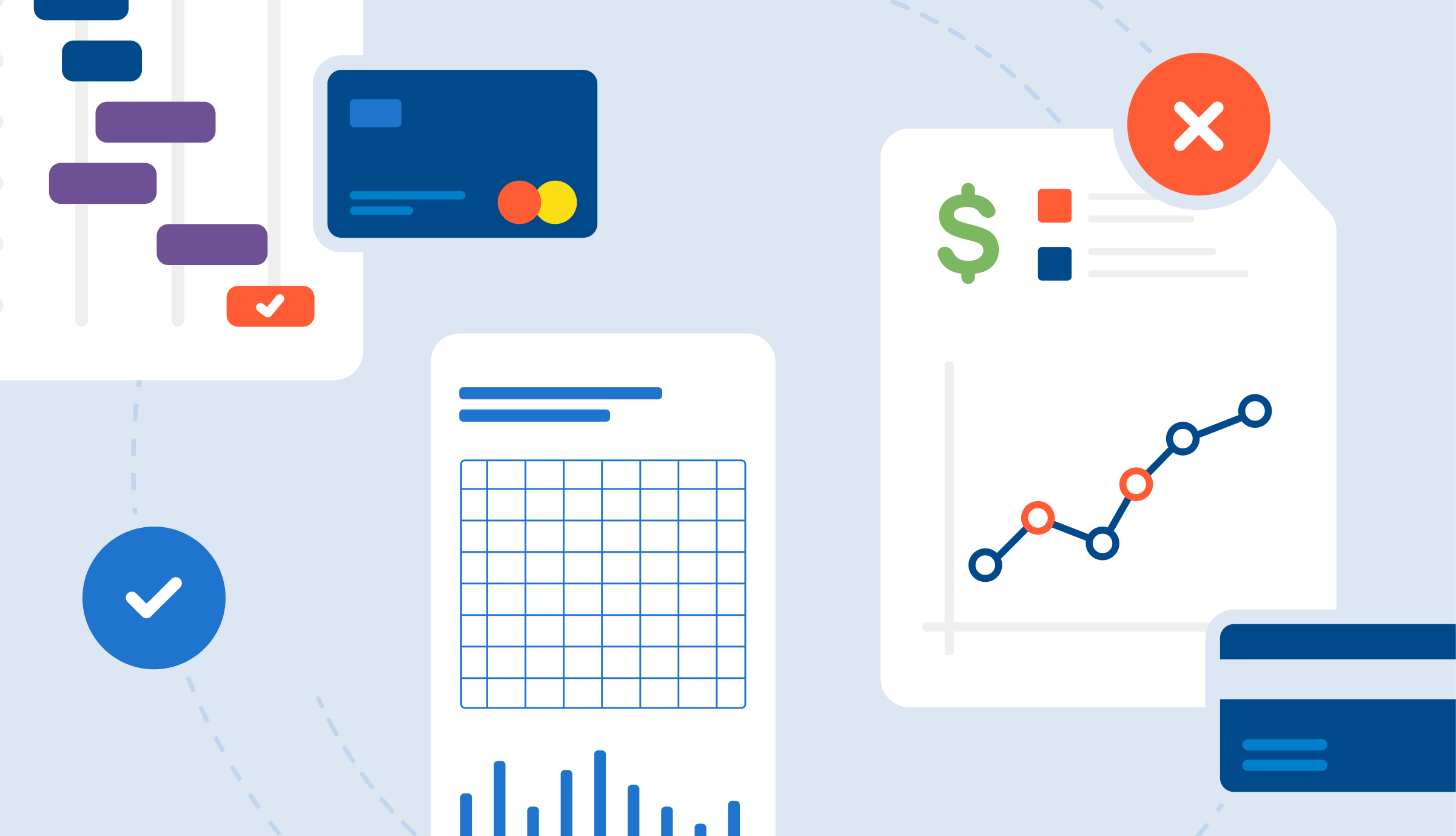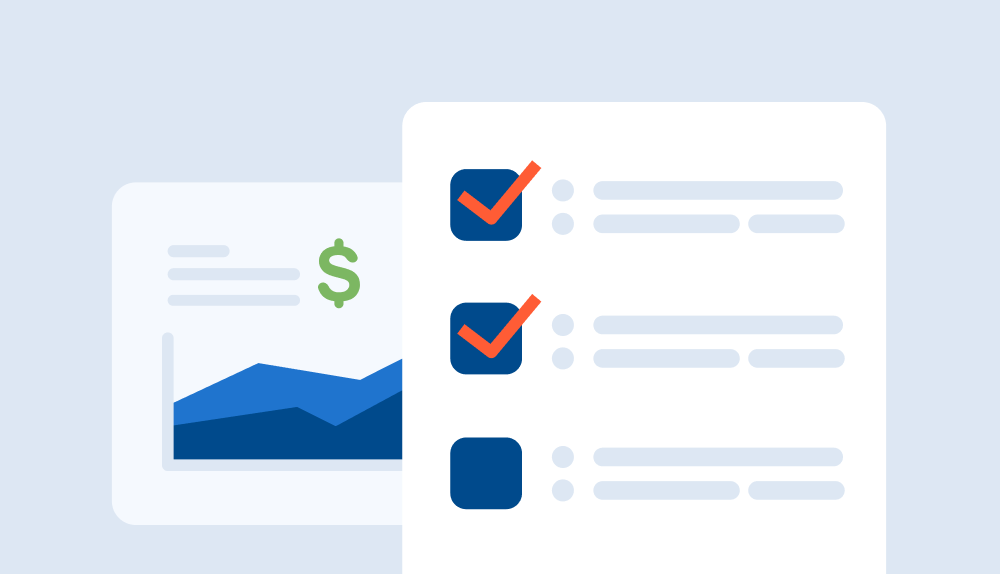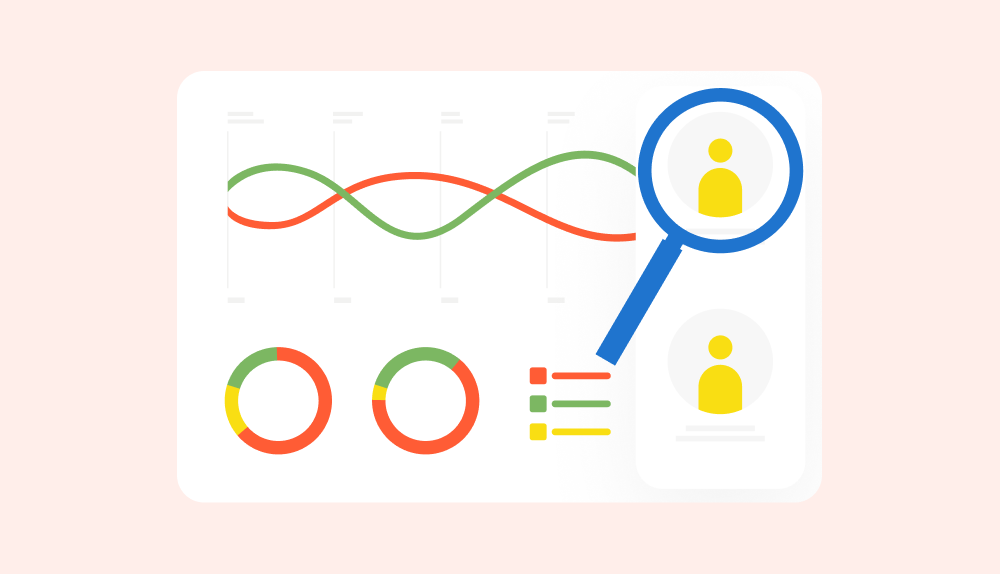Introduction
The right Resource Management software has the power to transform your professional services firm, from streamlining workflows to boosting project profitability (and everything in between).
While these benefits are extremely desirable, the hunt for the best Resource Management software is less than. Many tend to delay the search because of how stressful and time-consuming it can be. You want to make sure that you’re making the right choice for your organization and that internal stakeholders agree.
We created this Resource Management software buyer’s guide to help speed up this process, win stakeholders’ support, and leave you feeling confident in your final decision.
What we’ll cover in this guide:
- Why professional services firms should invest in Resource Management software
- The key features to look for in Resource Management software
- How to choose the best Resource Management software
- The right question to ask software vendors

4 Vital Signs It’s Time to Invest in Resource Management Software
Do these pain points sound all too familiar?
1. My resource decisions often cause issues in project teams by mismatching skills and assignments. This usually impacts project completion, client satisfaction, and profitability.
What this commonly feels like:
- Data fragmentation hurts profits
- You can’t use past projects to set future prices
- Unforeseen conflicts cause project delays
- Your projections have blind spots
- You don’t know how to link utilization to profitability
2. My organization lacks visibility because we don’t have a single source of truth that gathers all information in one place.
What this commonly feels like:
- You have time off requests, time tracking, finances, and more spread across different tools
- Pulling data together is a manual, time-consuming, and error-prone task for you
- Your staffing decisions are not working out as you expected
- You’re not sure if you have the right reports to run your business
3. It’s hard for me to accurately plan and balance resources for projects without real-time reporting.
What this commonly feels like:
- You’re unsure if you can take on more work right now
- You can rarely forecast more than four weeks out
- Manual workflows and old data slow down your business
- Your visibility depends on who provides the data
- You can’t model future project scenarios, limiting your ability to choose the most profitable path
4. Not knowing how to distribute resources negatively impacts my staff.
What this commonly feels like:
- Your team frequently gets assigned to projects that don’t align with their skills
- You struggle to view employee skill sets in a usable format
- Capacity planning is often a challenge
- You’re unsure if you can take on new projects
Benefits of Resource Management Software
Excel Could Be Holding You Back
The professional services industry is not just about keeping up — it’s about thriving, being productive, and wowing clients with impressive results. While traditional tools like Excel have been used for managing different aspects of services organization, they come with their fair share of limitations when it comes to scaling a consulting business:
- Scattered data and a lack of collaboration make it hard to keep a clear view of resources and hours spent on a project.
- Managing workloads and availability becomes tricky without automation, leading to uneven distributions and potential employee burnout.
- Excel’s visualization challenges make it tough to analyze resource data, affecting decision-making and profitability.
- Manual data entry raises the risk of errors, potentially impacting client engagements.
Level Up With Resource Management Software
Resource Management software offers a streamlined solution, addressing these challenges with real-time insights, efficient collaboration, and strategic resource allocation for increased productivity and profitability.
If there’s any hesitation to ditch Excel, share with stakeholders the following benefits of Resource Management software:
Before: Bad Resource Decisions Affect Project Success
With Resource Management Software:
Streamlined Decision-Making: Managers are able to make data-driven decisions seamlessly during planning meetings with Resource Management software. This eliminates the need to spend valuable time searching for relevant information, enabling quicker and more informed choices.
Efficient Resource Allocation: Users can efficiently plan resource allocation based on demand. The software allows firms to adjust what skilled employees are assigned to a job on the fly. This proactive approach helps prevent overutilization or underutilization, ensuring that resources are optimally utilized.
Real-Time Monitoring and Optimization: Resource Management software users can quickly identify deviations from the plan. Live data provides a comprehensive view of project progress, allowing for immediate adjustments and optimization of resource allocation. This approach ensures that projects stay on track and resources are aligned with evolving project needs.
Before: Company Confusion from Lack of Central Information
With Resource Management Software:
Centralized Information Hub: You’re provided with a centralized platform that consolidates all the information needed to plan a team’s workload in one place. This eliminates the need to navigate multiple sources, ensuring easy access to crucial data for efficient decision-making.
Comprehensive Data Integration: The system combines various data elements, including employee experience, skills, time-offs, public holidays, uncertain projects, and contract capacity. This holistic approach to data integration sets it apart from other resource planning tools, providing users with a comprehensive overview to inform resource allocation decisions.
Advanced Scheduling Options: Resource Management software offers advanced scheduling options, allowing customers to make precise people allocations. This results in fewer schedule conflicts, minimizes overallocations, and ultimately contributes to improved project profitability. The ability to optimize resource allocation based on a comprehensive dataset leads to smoother project workflows and better overall resource utilization.
Before: Planning Project Resources is Difficult Without Real-Time Reporting
With Resource Management Software:
Instant Access to Essential Reports: With Resource Management software, managers can access crucial reports instantly. This not only reduces administrative work but also provides greater insights into project execution. Up-to-the-minute reporting empowers managers with up-to-date information, allowing for quicker and more informed decision-making.
Longer-Term Planning Capability: Users can create longer-term plans, leading to a better understanding of resource allocation for billable activities. This capability promotes more balanced project execution and facilitates the efficient scaling of the company. Long-term planning ensures that resources are allocated strategically, aligning with the overall goals of the organization.
Scenario Modeling for Informed Decision-Making: Firms can model different scenarios for demand. This feature of the software aids in more informed decision-making regarding the resources required to fulfill upcoming projects. This is important if your staff has varied internal rates — you don’t need overqualified resources performing certain tasks. By simulating various scenarios, organizations can proactively plan for changes in demand, ensuring that resources are allocated optimally to meet project requirements.
Before: Staff Suffers from a Limited Understanding of Resource Distribution
With Resource Management Software:
Comprehensive Information for Streamlined Processes: Resource Management software provides comprehensive information on resource distribution, streamlining internal processes within the organization. The availability of detailed data ensures that staff members have a clear understanding of how resources are distributed and utilized across various projects.
Informing Employee Development Strategies: An employee bench is unavoidable, but a smart organization manages its bench time by measuring allocations vs capacity. By having insights into your employee bench, as well as the allocation of resources, organizations can make informed decisions about training, skill development, and talent management.
How to Choose the Best Resource Management Solution for Your Professional Services Business
Weighing all your options can seem overwhelming in such an expansive market. However, the more research and vendors you look at, the more you’ll come to find out, there’s one ideal solution for you. Of course, that’s easier said than done.
Once you’ve gathered a list of 3-5 resource management tools you like, use discovery calls with each provider to discuss your basic needs. Consider how different stakeholders in your firm, such as Owners, Operations, Finance, and Project Managers, currently handle processes and what challenges they face.
Focus on your requirements rather than the ideal preferences for each stakeholder during these conversations. It’s important to make sure they have all the needed and necessary features that your organization can benefit from before you take any next steps in the decision process.

5 Key Features of Resource Management Software to Look For
Shared below are the 5 features that should be non-negotiables in a resource management solution as well as why. Additionally, we’ve included the key questions to ask vendors during your discovery calls, specific components to look for within those key features, and what internal stakeholders should be part of those discussions.
1. Demand and Resource Planning
Effective demand and resource planning means you’re allocating the right people at the right time to the right project. Anticipating project needs allows for strategic planning of roles, offering flexibility in choosing specific team members later. This simplifies decision-making and optimizes resource use.
The ability to outline a project’s timeline through demand planning aids managers in informed personnel allocation decisions. This visibility enables accurate project estimates and quotes, maximizing revenue potential while ensuring project profitability from the early planning stages.
Who to include: Operations, Project Managers
What to look for:
- Capability to filter and locate resources based on role, skill, team, specific tags, and other criteria.
- Ability to view the entire team’s workload on one screen using an availability heat map for a visual representation, reducing underutilization or overutilization
- Real-time visibility into resource availability, workload, current assignments, and upcoming PTO for informed decision-making.
- An intuitive and user-friendly interface for easy navigation and efficient allocation.
- Flexibility in configuring workflows to match the unique needs and processes of different projects or teams.
Questions to ask:
- Can I easily see when resources are available for current and future projects?
- Does the software show me the skills and costs of resources so that I can plan for the most profitable resource allocation?
- Is the information about resource allocation updated live for quick decision-making?
- How do I prioritize tasks and projects to ensure critical assignments get the right resources?
2. Skills Management
Assigning resources to projects based on their skill sets is a strategic approach that boosts project outcomes and employee satisfaction. By aligning individual expertise with project requirements, organizations ensure precision and efficiency. This practice enhances the quality of deliverables and cultivates a positive work environment, valuing employees for their unique contributions.
Who to include: Operations, Project Managers
What to look for:
- Visibility into the availability of resources based on their skill sets, updated in real-time.
- Ability to profile and categorize the skills, experience, and language proficiency of each team member within the system.
- Capability to automate the assignment of tasks or projects to team members based on their skill sets.
- Tools for creating and implementing skill development plans to enhance the capabilities of team members.
Questions to ask:
- How do I ensure the most appropriately qualified staff is assigned to each task or project based on their skills and availability?
- Is there a search feature that allows project managers to find resources based on their specific skills?
- Can tasks or projects be automatically assigned to team members based on their skill sets?
- How does the software monitor and track the development and utilization of skills over time?
3. Time-Off Management
Time-off management is crucial for organizations, helping with informed decision-making when employees request leave. By assessing its potential impact on team workloads and project schedules, it contributes to overall project profitability. This approach also prevents project delays, enhances client satisfaction, and enables managers to strategically plan approvals, minimizing disruptions to ongoing projects.
Who to include: Operations, Project Managers
What to look for:
- Access to a centralized calendar for quick visibility into team members’ time-off status and availability.
- An intuitive request workflow that simplifies the submission, review, and approval process, streamlining communication between employees and managers.
- Reporting features to gain insights into time-off trends for better resource planning.
Questions to ask:
- Does the system send alerts about upcoming events to avoid schedule conflicts?
- Can you set holidays to be location-based?
- Can you give managers specific user rights for reviews and approvals?
4. Reporting
Live reporting and analytics play a key role in managing resources and finances. They offer instant insights into resource use and project progress, aiding in prompt decision-making, efficient resource utilization, and enhanced future planning for better outcomes.
Who to include: Operations, Finance, Project Managers
What to look for:
- Dashboards that provide an at-a-glance overview of resource utilization, project progress, and key performance indicators.
- Insights into time-tracking data, enabling analysis of time spent on tasks and projects for improved efficiency.
- Option to analyze historical data to identify trends, patterns, and areas for improvement in resource management practices.
- Reporting on financial aspects such as budget status, actual spending, and cost breakdowns related to resource management.
Questions to ask:
- Can the system generate customizable reports?
- How is project progress tracked in real-time, including milestones achieved, tasks completed, and remaining work?
- Are tools available for comparing forecasted data with actual performance to identify variances and improve future planning?
- Are metrics available related to individual and team performance, aiding in performance evaluation and skill development?
5. Financial Planning
Financial forecasting in Resource Management software is essential for clear insights into expected costs tied to resource use. It aids in effective budget planning, reducing the risk of unforeseen financial challenges. This forecasting empowers proactive decision-making in resource allocation, ensuring efficiency and cost-effectiveness in project execution. Overall, it plays a vital role in strategic planning, preventing budget overruns, and promoting financial stability.
Who to include: Operations, Finance
What to look for:
- Centralized financial data
- Ability to monitor and manage work in progress to make data-backed decisions.
- Capability to track and monitor expenses associated with resource utilization and project execution.
- Accurate estimation of costs related to resource usage, helping in budget planning and control.
- Recording and analyzing historical financial data related to resource management for trend analysis and continuous improvement.
Questions to ask:
- How do you ensure accurate estimation of costs related to resource usage for effective budget planning?
- Is financial data related to resource management displayed in real-time for immediate decision-making?
Other Things To Think About: Looking Beyond Product Features
Another important aspect to think about when going through your top picks for Resource Management software is what it takes to get it started at your organization. Keep in mind how easy the adoption and implementation process is.
Additionally, assess the level of support from the software provider. As your organization scales, resource needs evolve. Ensure the software provider is committed to being a partner, working alongside you throughout this growth.
Choose a tool that fits your current needs and anticipates where your organization will be in the years ahead. Even the best solution may face challenges, so evaluate which vendor offers reliable support during scaling.
What else you should consider:
- Training and onboarding: Evaluate available resources for a smooth start.
- Scalability: Ensure the software can accommodate growth.
- Support and maintenance: Consider ongoing support and updates.
- Integration capabilities: Check compatibility with existing tools and systems.
- Data security: Learn what measures the company takes to protect sensitive information.
- Customization options: Assess the level of adaptability to unique needs.
- User interface and experience: Consider the software’s user-friendliness.
- Cost and ROI: Analyze overall ownership costs and return on investment.
- Vendor reputation: Research the reputation of the software provider.
- Regulatory compliance: Ensure compliance with industry regulations.
Other questions to ask:
- How do we get started – phased or all at once?
- What help do we get for team onboarding?
- Is your support team in-house or outsourced?
- How secure is your platform, and why trust you with our data?
- Does your client base match our size and industry?
- How often do you update features?
- Do you listen to clients when making software changes? Can you give an example or reference?

PSA Software vs Resource Management Software
If you’re familiar with Professional Services Automation (PSA) software, you may be wondering how it’s different from Resource Management software and which one you need. The answer could be that you need both!
For businesses just starting their journey toward optimizing resource management, starting with specialized Resource Management software can be a smart move. However, as a business grows, it may need more than resource management. That’s where Professional Services Automation (PSA) software comes in. PSA software does everything from managing projects to handling invoices. While starting with Resource Management software gives immediate benefits, moving to PSA software is a progressive step forward. It helps businesses optimize their entire operation, unlocking more value. By gradually adding PSA features, businesses can adapt and stay competitive.
PSA Software
What Makes it Great
PSA software is like a Swiss army knife for professional service organizations. Its main job is to help these organizations manage everything from start to finish. This includes things like project management, tracking time and expenses, sending out bills and invoices, and even keeping an eye on the budget. Basically, it’s there to make sure that everything runs smoothly and that the business makes as much money as possible.
Key Features
Project management tools: Help plan, execute, and wrap up projects.
Time and expense tracking: Keep tabs on how much time is spent on different tasks and how much out-of-pocket expenses are spent.
Billing and invoicing: Streamline the process of getting paid by clients.
Resource management: Assign the right people to the right projects based on their skills and availability.
Reporting and Analytics: Provide insights into how well the business is doing and help make smart decisions.
Resource Management Software
What Makes it Great
Resource Management software is all about making sure that the right people are in the right place at the right time. Its main goal is to use resources, like employees and equipment, as efficiently as possible to get the job done.
Key Features
Resource scheduling: Match up project needs with the availability of resources.
Skills tracking: Find the best person for each job based on their skills.
Capacity planning: Look ahead to see what resources will be needed for future projects.
Utilization tracking: Keep an eye on how efficiently resources are being used.
Forecasting: Predict when there might be too few or too many resources available.
Choosing between PSA software and Resource Management software depends on your current business needs and stage of growth.
If you’re primarily focused on optimizing resource allocation and planning, Resource Management software may be the right fit, offering targeted solutions for efficient resource utilization. However, as your business expands and requires more comprehensive management of projects, invoicing, and overall operations, transitioning to PSA software becomes advantageous. Ultimately, evaluating your current requirements and growth trajectory will help determine which software solution best aligns with your business objectives.
If you’re not already using PSA software to better manage your firm, does it sound like something you’re also interested in exploring? We have another buyer’s guide for that!

Choosing the Right Partner
Picking the right Resource Management software for your professional services firm is an important decision. Our goal is that this guide will help you along the journey of finding the right vendor for you. We couldn’t end this article without touting BigTime’s resource management solution, BigTime Foresight.
Foresight is changing how you can manage resources by ensuring balanced team workloads, confident scenario modeling, and cohesive team collaboration. With its comprehensive insights, it optimizes resource allocation for increased productivity and profitability.
Curious to see what Foresight can do for your firm? Feel free to reach out to us by emailing sales@bigtime.net or requesting a demo to see how we can help.

Summary
This buyer’s guide explores crucial considerations when selecting Resource Management software for professional services firms. It outlines key features, benefits, and common challenges, emphasizing the limitations of traditional tools like Excel.
This guide covers the transformative impact of Resource Management software and provides insights into choosing the right software, focusing on these most important features:
- Demand and resource planning
- Skills management
- Time-off management
- Reporting
- Financial planning
Selecting the right Resource Management software for your professional services firm is an important choice. This guide serves as a valuable resource to assess your options and make an informed decision regarding the adoption of Resource Management software, aligning business goals with long-term strategic outcomes.
Frequently Asked Questions About How to Choose the Best Resource Management Software
What are the major components of Resource Management software?
The major components of Resource Management software include skills management, time-off management, reporting, and financial planning, collectively contributing to streamlined processes and enhanced collaboration.
Why use Resource Management software?
Resource Management software is used to facilitate effective planning, allocation, and utilization of resources. Its purpose is to streamline processes, boost visibility, and maximize resource efficiency within an organization.
Which is the best Resource Management software?
Choosing the right Resource Management software for an organization depends on its unique needs and budget. Different software options vary in features and pricing, so it’s essential to research and compare them based on your specific requirements. It’s important to research different Resource Management software options available in the market to compare them.
Who uses Resource Management software?
Resource Management software is utilized by various professional services industries. These customers leverage the software to ensure efficient planning, allocation, and utilization of resources.





